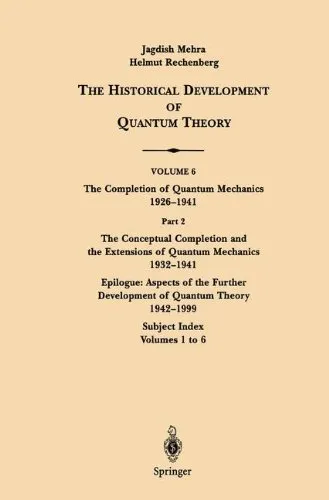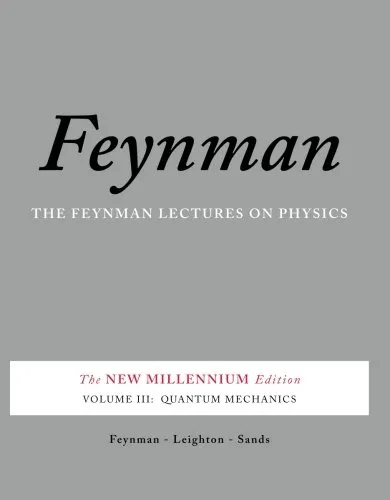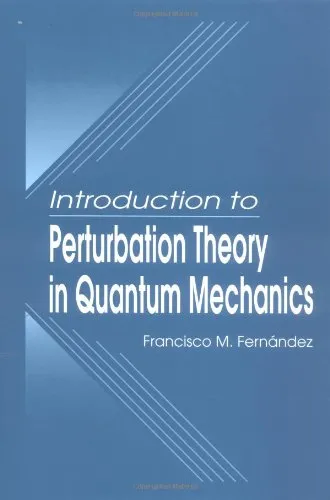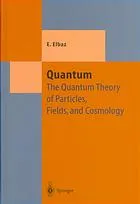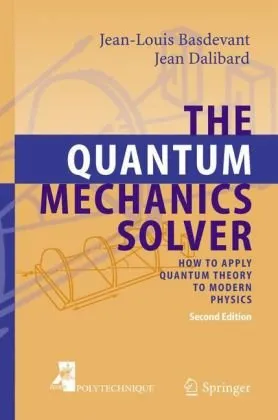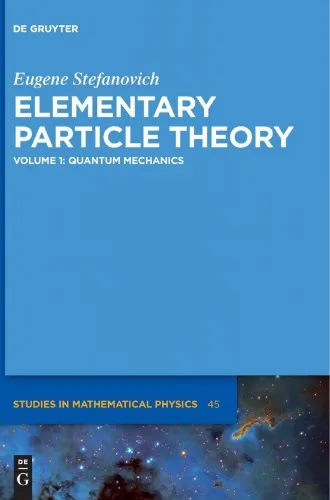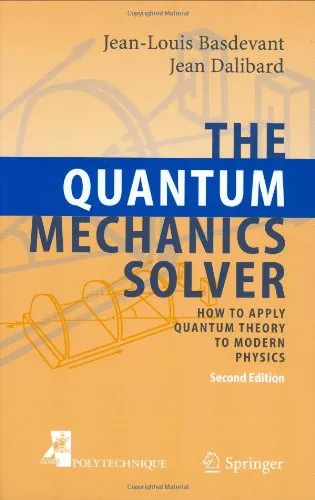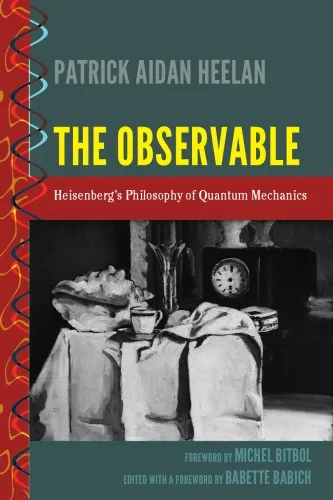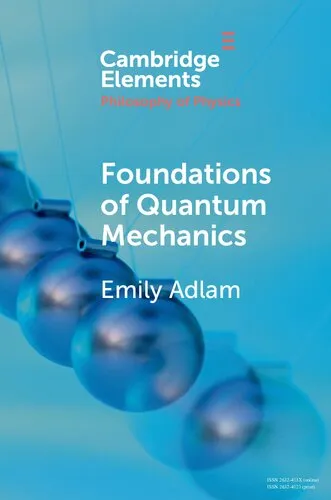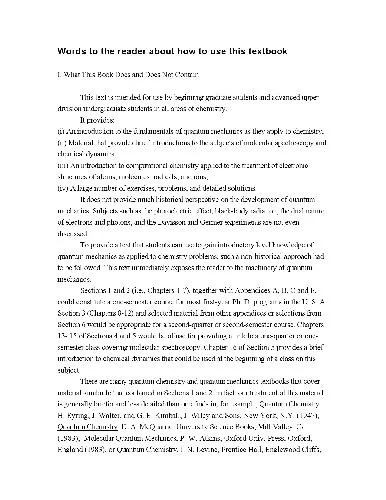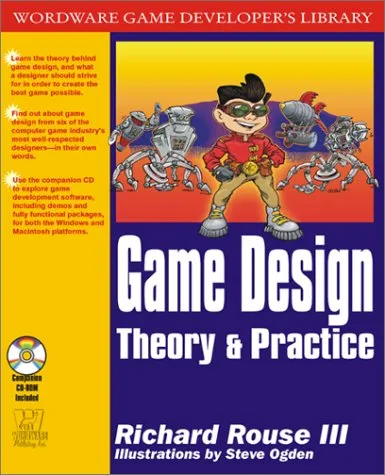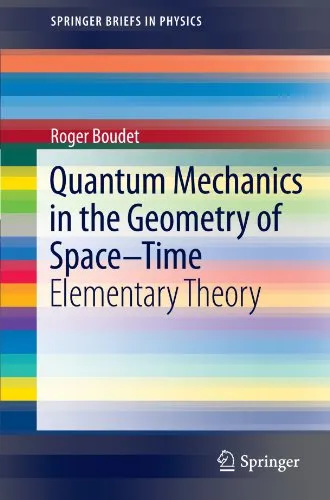Part 2: The Conceptual Completion and Extensions of Quantum Mechanics 1932-1941. Epilogue: Aspects of the Further Development of Quantum Theory 1942-1999:
4.5
بر اساس نظر کاربران

شما میتونید سوالاتتون در باره کتاب رو از هوش مصنوعیش بعد از ورود بپرسید
هر دانلود یا پرسش از هوش مصنوعی 2 امتیاز لازم دارد، برای بدست آوردن امتیاز رایگان، به صفحه ی راهنمای امتیازات سر بزنید و یک سری کار ارزشمند انجام بدینکتاب های مرتبط:
مقدمهای بر کتاب
کتاب "Part 2: The Conceptual Completion and Extensions of Quantum Mechanics 1932-1941. Epilogue: Aspects of the Further Development of Quantum Theory 1942-1999" اثر جاودان دو نویسنده برجسته، جَگدیش مهرا و هانس رشنبرگ، یکی از برجستهترین آثار در زمینه مکانیک کوانتومی است. این کتاب که به توصیف و تحلیل عمقهای نظری و کاربردی مکانیک کوانتومی میپردازد، تحولات کلیدی در این حوزه را در دوران بحرانی و مهم زندگی علمی بررسی کرده و چشماندازهایی تازه را برای درک بهتر پیشرفتهای بعدی در این علم فراهم میآورد.
خلاصهای از کتاب
این کتاب به بررسی تکمیل مفهومی و گسترشهای مکانیک کوانتومی در دوره ۱۹۳۲ تا ۱۹۴۱ میپردازد و سپس با اپیلوگ خود به بررسی جنبههای مختلف توسعه بیشتر نظریه کوانتوم در سالهای ۱۹۴۲ تا ۱۹۹۹ میپردازد. نویسندگان به صورت جامع مفاهیم جدید معرفی شده در مکانیک کوانتومی و چگونگی پیادهسازی و استفاده از این مفاهیم در مسائل پیچیده علمی را توضیح میدهند. تاریخچهای از ایدههای نوین به همراه تحلیل دقیق و جزئی از پیشرفتهای علمی که در طی یک نیم قرن رخ داده است نیز در این کتاب مطرح شدهاند.
نکات کلیدی
- بررسی تاثیرات اصول مکانیک کوانتومی بر نظریههای علمی دیگر.
- تحولهای مفهومی کلیدی و بررسی چگونگی اصلاح و تکمیل تئوریها.
- ارائه دقیق چارچوبهای نظری برای مدلسازی پدیدههای کوانتومی پیچیده.
- تاثیر پیشرفتهای تکنولوژیکی بر گسترش مکانیک کوانتومی.
نقلقولهای مشهور از کتاب
"مکانیک کوانتومی، با چالشها و مفاهیم جدیدش، نه تنها شکلدهنده اندیشههای مدرن است بلکه مسیر تحولات علمی آینده را نیز تعیین میکند."
"درک مکانیک کوانتومی، نیازمند نگاه دقیق و تحلیلی به تعاملات اساسی طبیعت است که به مرور زمان با پیشرفتهای علمی به تصویر کشیده میشوند."
چرا این کتاب اهمیت دارد
این کتاب به دلیل تحلیلهای جامع و عمیق از تحولات و تکاملهای تئوری کوانتومی در دورهای فراگیر از تاریخ علم، اهمیت خاصی دارد. به پژوهشگران و علاقهمندان به علم، نگاهی نزدیک به چگونگی شکلگیری، تکامل و چالشهای پیش روی مکانیک کوانتومی ارائه میدهد. علاوه بر این، این اثر به عنوان پلی بین گذشته علمی و چشماندازهای آینده، بستر مناسبی برای درک بهتر پیچیدگیهای علمی و پیشبینی جهتگیریهای نوظهور در علوم محض و کاربردی فراهم میکند.
Welcome to our exploration of a pivotal era in the evolution of quantum mechanics, where foundational concepts were meticulously completed and extended. "The Conceptual Completion and Extensions of Quantum Mechanics 1932-1941" with an epilogue discussing the subsequent developments from 1942 to 1999, is an authoritative text that captures the essence of a transformative period in modern physics. Authored by Jagdish Mehra and H. Rechenberg, this book provides an in-depth analysis of both historical progressions and conceptual breakthroughs that shaped the landscape of quantum theory.
Detailed Summary
The book is a meticulous synthesis of the developments within quantum mechanics from the years 1932 to 1941—a period marked by the culmination of ideas seeded in the earlier years of the 20th century. This volume documents how physicists like Paul Dirac, Werner Heisenberg, and Erwin Schrödinger, among others, contributed to the refinement of quantum mechanics into a more structured science.
The authors offer a detailed exploration of how quantum mechanics was not only about theoretical frameworks but also about experimental verifications that provided robustness to the theory. The book covers complex topics such as quantum field theory, the uncertainty principle, and the matrix mechanics that emerged during this period.
Following the initial period, the book transitions to an epilogue that examines how these developments laid the groundwork for further advancements post-1941, delving into areas like quantum electrodynamics, quantum chromodynamics, and the eventual formulation of the Standard Model of particle physics.
Key Takeaways
- The period from 1932 to 1941 was critical for the consolidation of quantum mechanics as a complete theory.
- This era paved the way for subsequent developments in the mid-20th century that redefined modern physics.
- The book provides an intricate analysis of the fundamental experiments that validated quantum theories.
- It emphasizes the collaboration and sometimes contentious debate among physicists that spurred progress.
Famous Quotes from the Book
“The evolution of quantum mechanics is a testament to the ingenuity of human thought, navigating through the limitations of classical intuition to uncover a realm bound by probabilities and operators.”
“The story of quantum mechanics is not just the story of isolated discoveries but a tapestry of interconnected innovations that continue to inspire.”
Why This Book Matters
This book stands as an essential read for anyone interested in the historical and conceptual foundations of modern physics. It provides a comprehensive perspective on how early quantum mechanics evolved through rigorous scientific inquiry and debate. The authors' detailed narrative offers readers not only an understanding of the fundamental shifts in physics during the early 20th century but also an appreciation for the meticulous nature of scientific advancement.
Moreover, the book underscores the importance of both collaboration and intellectual tension in the scientific community, highlighting how these elements can drive revolutionary advancements. Its epilogue extends the understanding of quantum mechanics by elucidating its trajectory and impact on subsequent scientific developments up to the end of the 20th century.
دانلود رایگان مستقیم
شما میتونید سوالاتتون در باره کتاب رو از هوش مصنوعیش بعد از ورود بپرسید
دسترسی به کتابها از طریق پلتفرمهای قانونی و کتابخانههای عمومی نه تنها از حقوق نویسندگان و ناشران حمایت میکند، بلکه به پایداری فرهنگ کتابخوانی نیز کمک میرساند. پیش از دانلود، لحظهای به بررسی این گزینهها فکر کنید.
این کتاب رو در پلتفرم های دیگه ببینید
WorldCat به شما کمک میکنه تا کتاب ها رو در کتابخانه های سراسر دنیا پیدا کنید
امتیازها، نظرات تخصصی و صحبت ها درباره کتاب را در Goodreads ببینید
کتابهای کمیاب یا دست دوم را در AbeBooks پیدا کنید و بخرید
1248
بازدید4.5
امتیاز0
نظر98%
رضایتنظرات:
4.5
بر اساس 0 نظر کاربران
Questions & Answers
Ask questions about this book or help others by answering
No questions yet. Be the first to ask!
